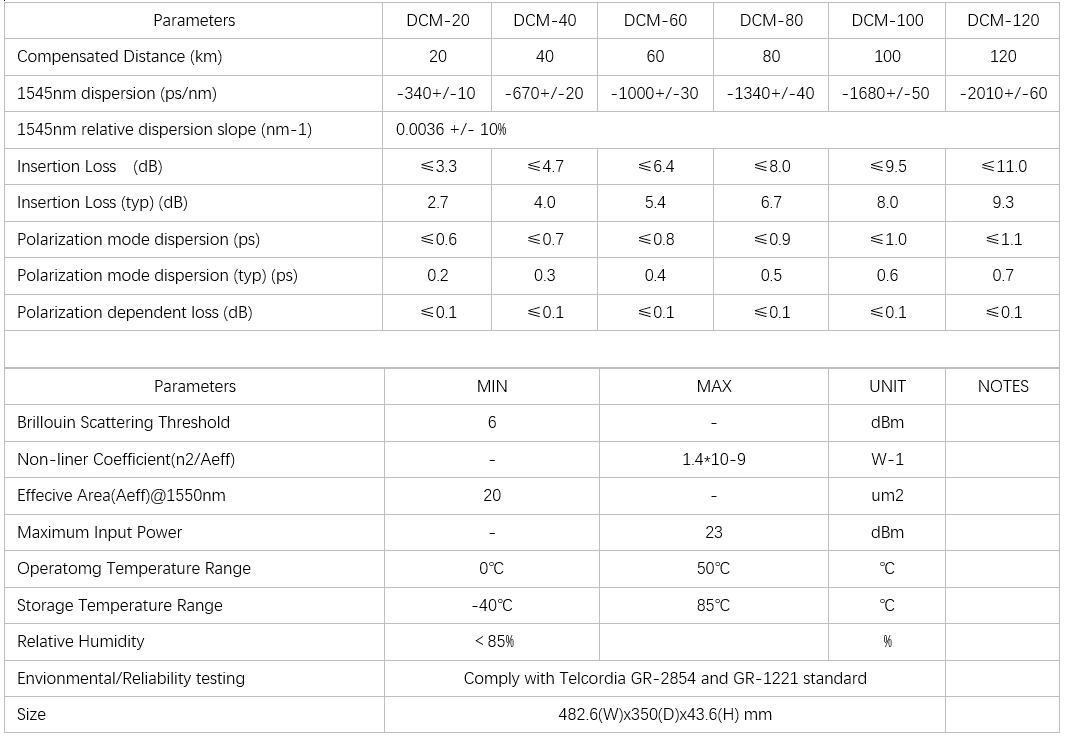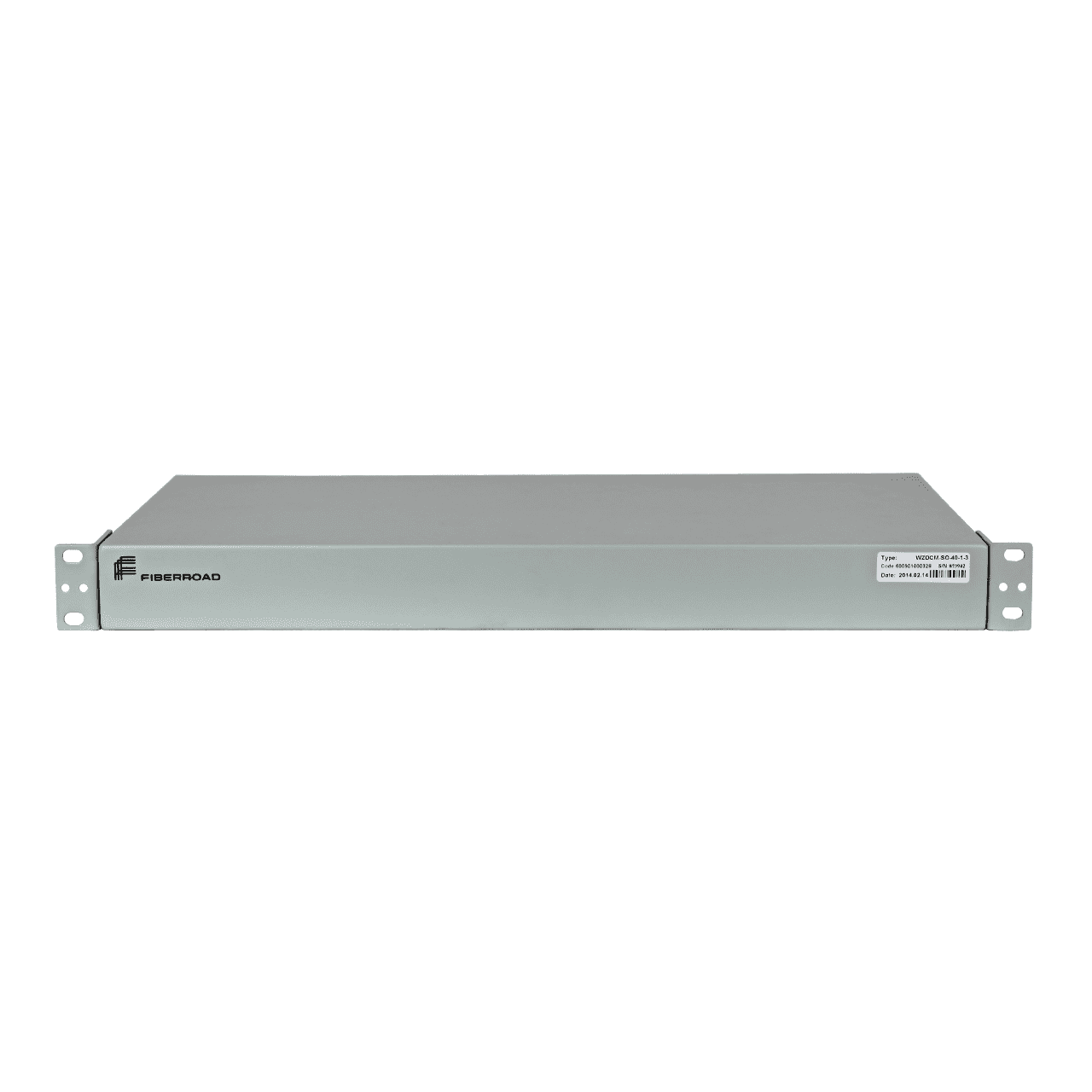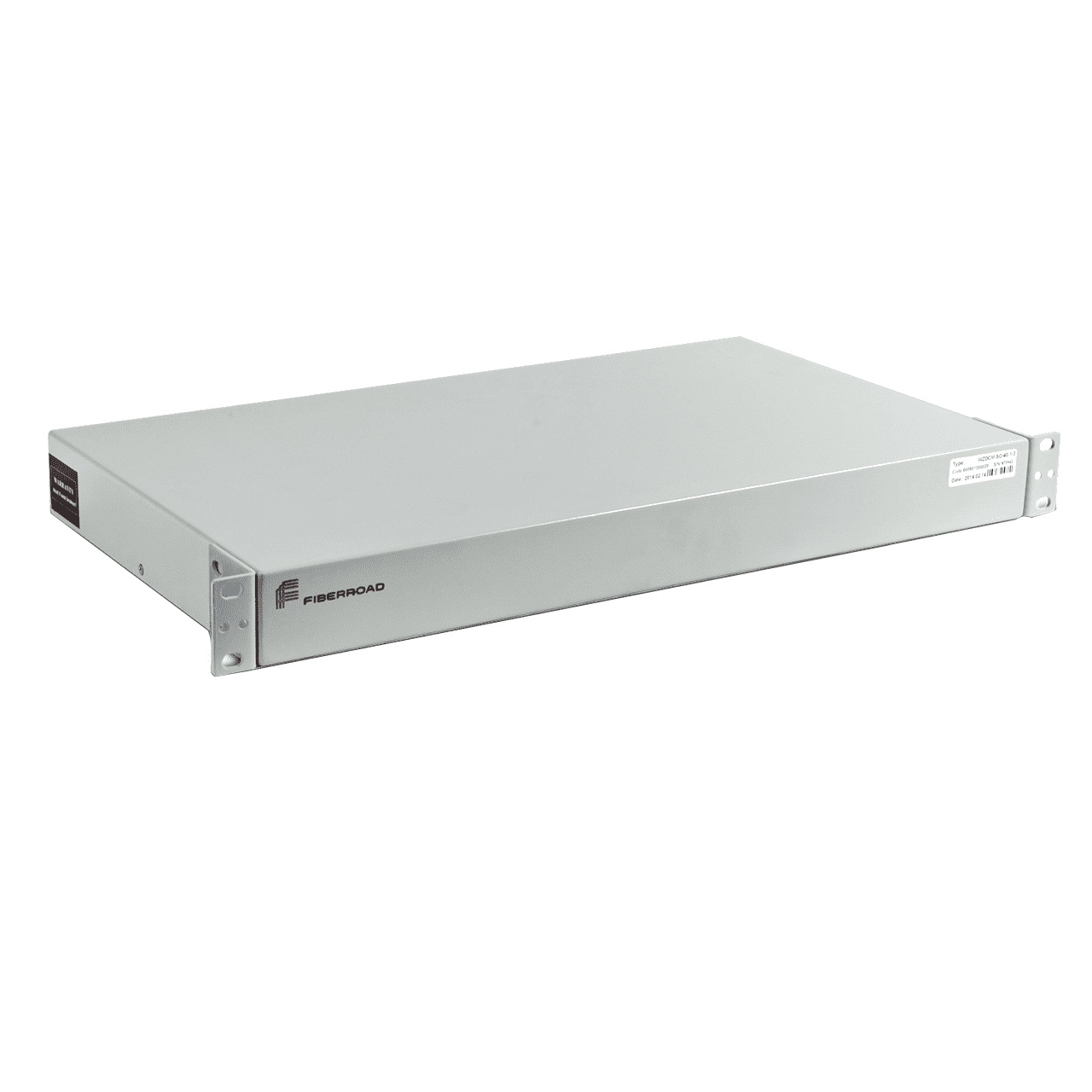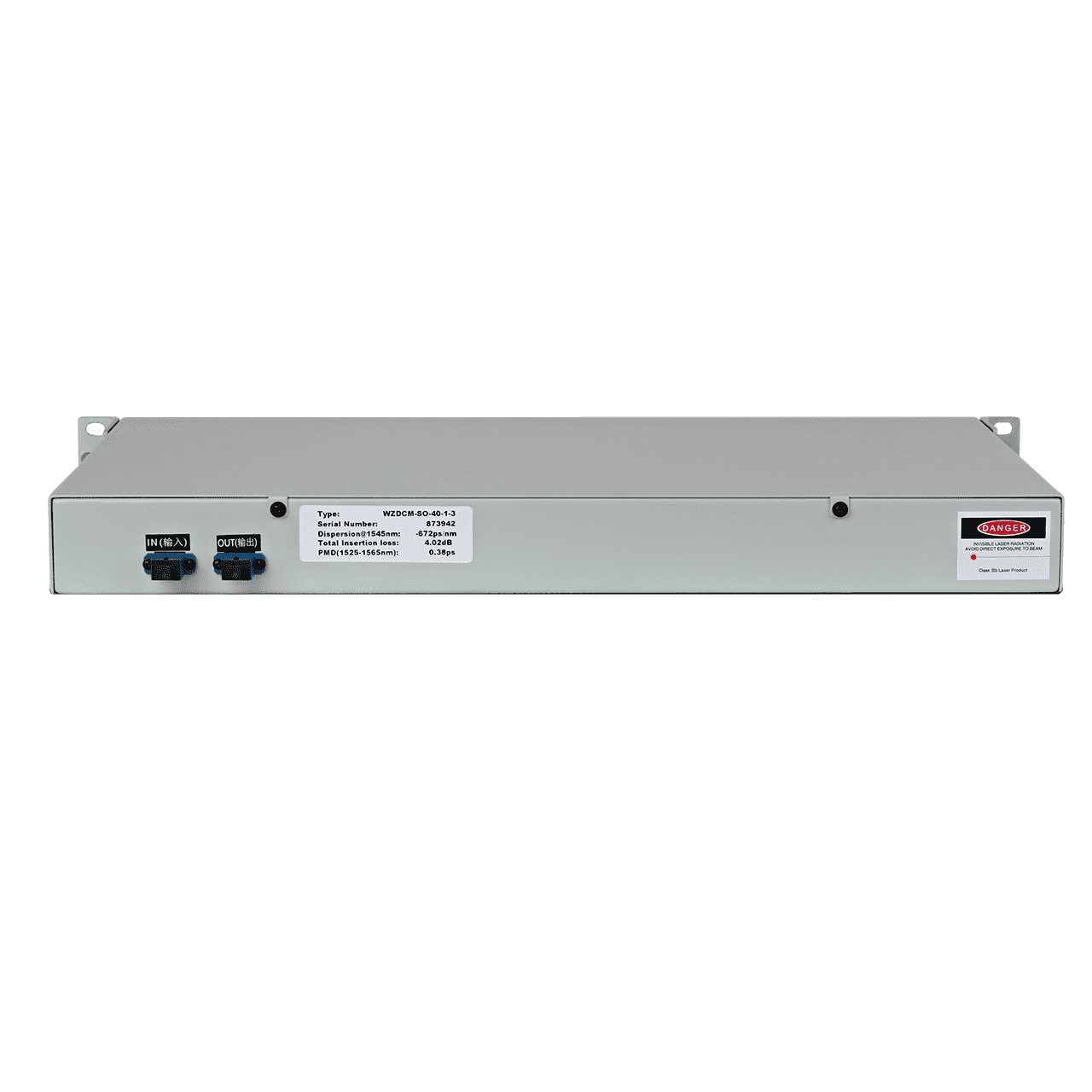Share This Product
Since dispersion is inevitable in optical fibers, dispersion-compensating fibers, such as those sold on this page, can be incorporated into optical systems. The overall dispersion of these fibers is opposite in sign and much larger in magnitude than that of standard fiber, so they can be used to cancel out or compensate the dispersion of standard single-mode fiber, such as a nonzero dispersion-shifted fiber. A negative dispersion slope enables effective cancellation of dispersion over a larger wavelength range since the dispersion slope of standard fiber is usually positive. Generally, a short length of dispersion-compensating fiber is spliced into a longer length of standard fiber to compensate for dispersion, as in the example below Product Highlights
- DWDM system dispersion compensation and broadband low residual dispersion
- G.652 fiber C-band 100% slope compensation (standard value)
- Low insertion loss
- Low polarization mode dispersion
- Performance indicators by
- Telcordia GR-2854-CORE standard certification
- Reliability by Telcordia GR-1221-CORE standard certification
Dispersion compensation and dispersion slope compensation Obtained at a specific wavelength dispersion compensation, should satisfy the following relationship: DTF × LTF + DDCF × LDCF = 0 DTF: transmission fiber dispersion; LTF: length of the transmission fiber; DDCF: dispersion of the dispersion-compensating optical fiber; LDCF: dispersion compensation fiber length; Dispersion slope compensation in the band should satisfy the following relationship: STF × LTF + SDCF × LDCF = 0 STF: dispersion of the transmission fiber; SDCF: dispersion of the dispersion-compensating optical fiber According to the above two relationships obtained dispersion compensation and dispersion slope compensation should satisfy the following relation: RDSDCF = SDCF / DDCF = STF / DTF Assuming standard single mode fiber at 1545nm wavelength dispersion of 16.7ps / nm / km, a dispersion slope of 0.060 ps / nm2 / km, RDS about 0.0036nm﹣1
Application Example













